Creating a successful product requires a deep understanding of your customers’ needs, a clear product vision, and a well-executed plan to bring your product to market. Knowing how to create product documentation is a critical part of this plan.
Product documentation provides detailed guidance on using and interacting with your product, from user manuals to API documentation. In short, it helps customers understand how to use your product and get the most value.
In this blog, we will talk about the types and benefits of product documentation. We will also learn how to create it, explore examples, and discuss how product documentation software helps.
What Is Product Documentation?
Product documentation is the comprehensive document accompanying a product, which explains how to use it effectively and safely. It is essential not only for helping users understand the product but also to provide necessary details that ensure the product is used correctly and to its full potential.
It can include user manuals, installation guides, troubleshooting instructions, frequently asked questions (FAQs), and technical specification documents.
It aims to enhance the user experience, reduce customer support costs by empowering users with information, ensure compliance with legal and safety requirements, and provide a reference for troubleshooting and maintenance. Adequate product documentation is clear, concise, and easily accessible, often tailored to the needs and technical level of the end-user.
For example, consider the user manual provided with a smartphone. It would cover essential aspects like setup instructions for initial configuration, detailed explanations of various features like the camera and email setup, and customization options for the home screen.
It would also include crucial safety information to prevent mishaps such as overheating or electrical shocks. Troubleshooting guides address common issues like connectivity problems or app malfunctions, offering step-by-step solutions.
| Related blog: How to Create Online Documentation? |
What Are the Types of Product Documentation?
Product documentation comes in different forms that provide critical information about a product’s use, maintenance, and troubleshooting. Let’s discuss some common types.
User Documentation
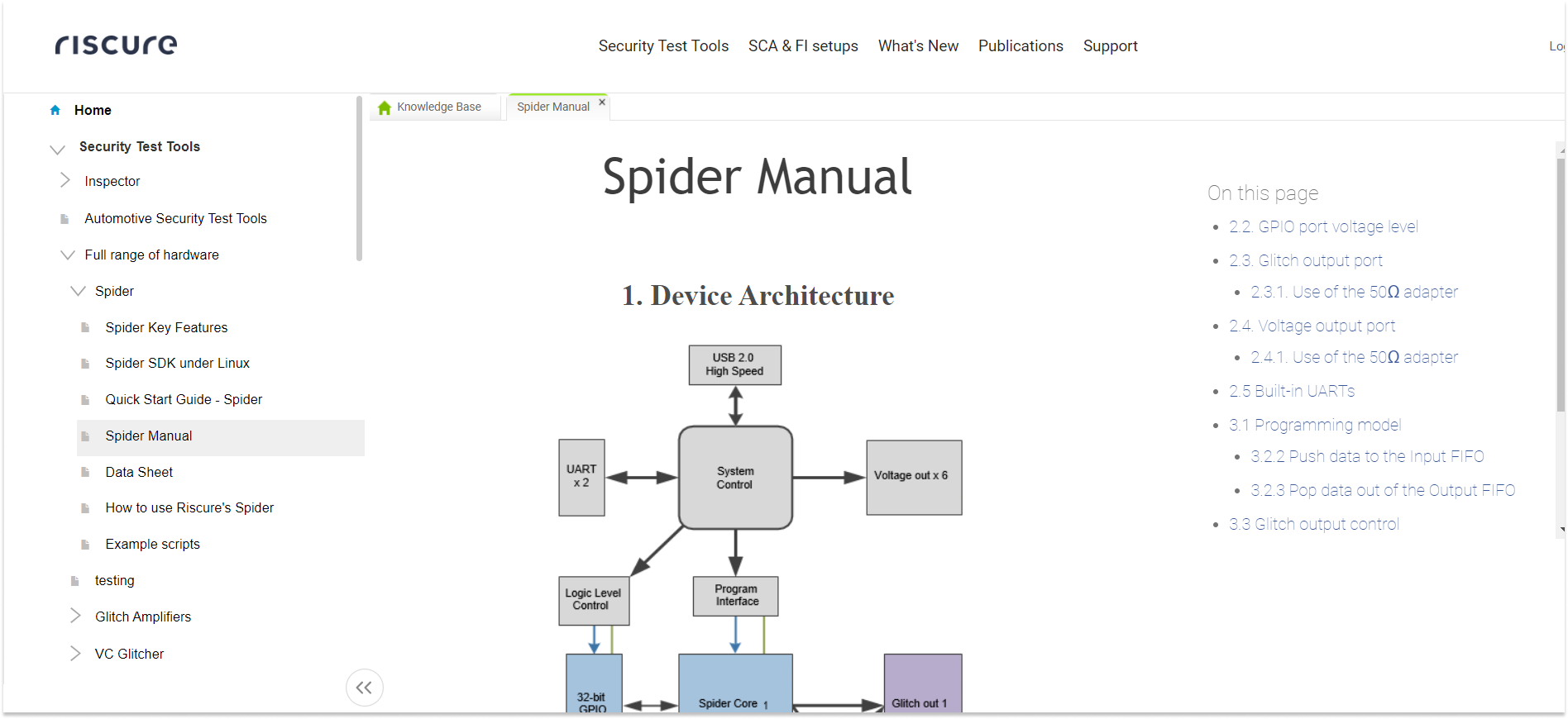
User Documentation directly assists users in understanding and utilizing a product effectively. It usually includes step-by-step instructions on using the product’s features, safety information, and legal disclaimers.
It is crafted to be easily understandable by the end user, generally supplemented with visuals and examples to aid comprehension and application.
FAQs

These address common concerns, problems, or inquiries that users might have about a product. They enable an efficient way to help users solve problems quickly without contacting customer support. They are handy for clarifying common misconceptions and providing straightforward solutions or tips.
Troubleshoot Guide
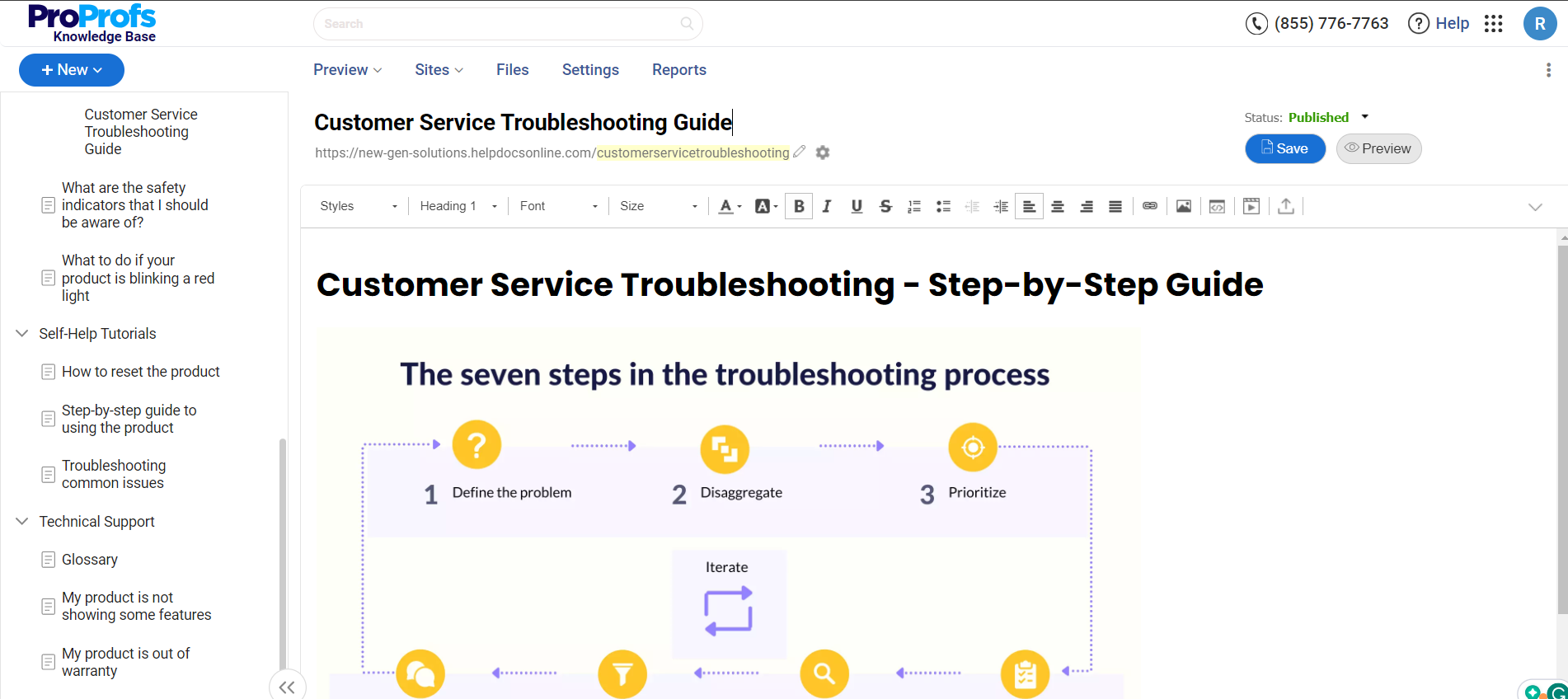
It is critical in helping users resolve issues without external help. These guides enable a systematic approach to diagnosing and fixing common problems during product use.
They are structured to guide the user from identifying the problem to implementing the solution, often through elimination.
Instruction Manual
It is a comprehensive resource that provides detailed operational procedures, installation steps, and guidelines on using a product safely and effectively.
Unlike user documentation, which may cover a broad overview, this delves into specific details and scenarios, guiding users through complex setups or usage cases.
SDK (Software Development Kit)
It is crucial for developers as it contains all the tools, libraries, relevant documentation, code samples, processes, and guides needed to develop applications associated with a specific software or hardware platform.
It is designed to help developers understand how to integrate and use the base product in their applications, significantly speeding up the development process.
Feature Documentation
It provides in-depth information on each specific product feature, including how the features work, their benefits, and how they can be customized or integrated with other features.
It benefits complex products where users may not readily understand or utilize all available features.
Internal Product Documentation
It is intended for use within the company by teams who design, develop, and support the product. This could include technical specifications, design documents, architecture diagrams, API documentation, and internal policies.
It is essential for maintaining consistency in development practices and product quality over time.
Release Notes
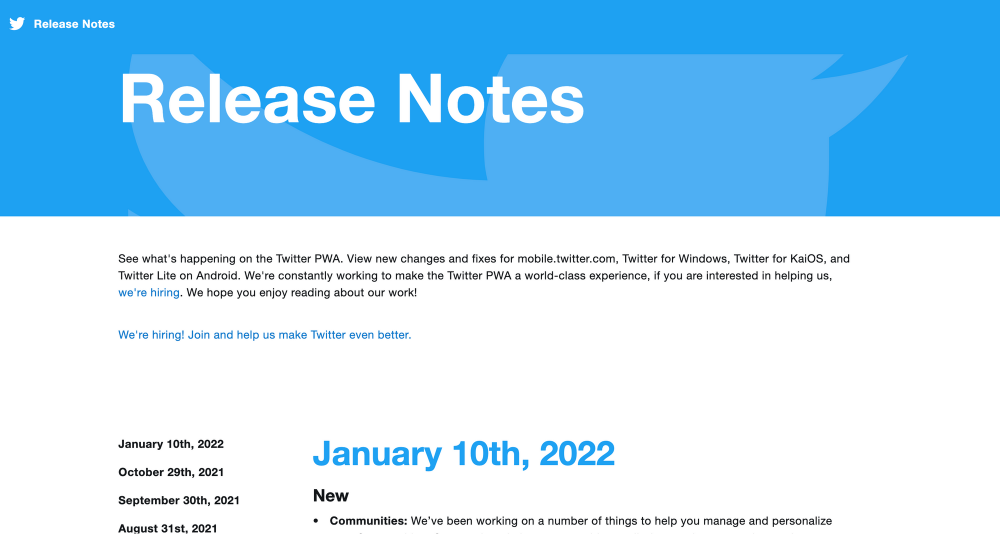
These are essential for users and stakeholders to understand the changes made from one product version to another. They usually include information on new features, improvements, fixed bugs, and potential issues.
These are vital for informing users about the product’s evolution and how changes might impact their product use.
Why Does Your SaaS Business Need Product Documentation?
For SaaS businesses that need to scale, product documentation helps keep support tickets from customers as low as possible. Not only this, but it also helps in other areas. These are:
- Legal Protection: It serves as a legal safeguard, providing proof that users were given all necessary information and warnings about the product, which can be crucial in defending against liability claims.
- Standardization of Service: It standardizes how features and procedures are communicated, ensuring that every customer receives the same quality of information and service, maintaining brand integrity and customer trust.
- Training Resource for New Employees: It acts as a training resource for new employees, minimizing the learning curve and training time by enabling a detailed reference about the product’s operation and features.
- Quality Assurance: It ensures that every product iteration meets the business’s quality standards, supporting consistent product development and delivery.
- Business Scalability: It supports business scaling efforts by ensuring all users, regardless of their joining timeline or geographical location, have access to the same resources and knowledge base.
- Feedback Mechanism: It can also be a channel for gathering user feedback. By monitoring which sections of the documentation are most accessed or where users frequently encounter issues, businesses can identify areas for product improvement.
- Enhancing Customer Confidence: Comprehensive documentation is viewed as a sign of a reputable and customer-centric company, which can improve customers’ confidence in the product and the brand.
- Support for Marketing Strategies: It can support marketing efforts by clearly outlining the features and advantages of a product and providing sales teams with precise details to highlight in pitches and promotional materials.
What Are the Benefits of Product Documentation?
Product documentation supports customers, enhances user experience, and streamlines operations.
Here’s why businesses need robust product documentation:
Improved Customer Onboarding
The initial experience with your SaaS product is critical for new users. Extensive product documentation can ease onboarding by providing new users the guidance they need to start quickly and effectively.
Well-written guides, tutorials, and walkthroughs can help users understand the core functionalities of the software, reducing the learning curve and increasing user satisfaction from the outset.
Reduced Support Costs
Comprehensive product documentation, like FAQs and troubleshooting guides, can empower users to solve common issues independently without directly interacting with customer support.
This self-service approach can significantly reduce the volume of support tickets and calls, reducing support costs. Also, when support teams engage, they can reference the same documentation to ensure consistent and accurate advice.
Enhanced Customer Satisfaction & Retention
Detailed documentation enhances the overall user experience by ensuring users can use the product to its full potential.
When users know how to utilize all relevant features and troubleshoot minor issues independently, their overall satisfaction with the product increases. This satisfaction is essential for retaining customers in a competitive SaaS market where switching costs for customers are often low.
Better Product Scalability & Updates
As your SaaS product evolves, so does the need to communicate changes and new features to users effectively. Product documentation that is easy to update becomes essential.
Documentation types like release notes, updated manuals, and new feature guides help existing users understand and adopt new functionalities without confusion, ensuring that updates add value to the user experience rather than complexity.
Strengthened Marketing & Sales Efforts
Product documentation can also serve as a marketing tool, presenting the capabilities and benefits of your SaaS product to potential customers.
Comprehensive documentation can help potential users understand how your product stands out from the competition and how it fits into their workflow, which can be crucial in the decision-making process.
Improved Compliance & Security
Compliance and security are vital for SaaS businesses, especially those dealing with sensitive data or operating in regulated industries.
Product documentation with details on regulations and standards, data protection policies, and user rights enables transparency, which builds trust with your customers and ensures that your business meets legal obligations.
Support for Global Reach
If your product is for a global market, the product documentation should cater to users from different regions and languages.
Insightful, localized documentation ensures that non-English speaking users are equally supported, expanding your product’s reach and enhancing accessibility.
Cultivating a Developer Ecosystem
Developer documentation becomes essential if your SaaS product offers APIs or integrates with other systems.
Well-documented APIs and developer guides enable third-party developers to build on your platform, expanding your product’s functionality and integration into larger ecosystems.
What Are the Steps to Create Comprehensive Product Documentation?
Creating effective product documentation requires a systematic approach and well-thought-out strategies. Here’s a step-by-step guide to creating extensive product documentation:
Understand Your Target Audience
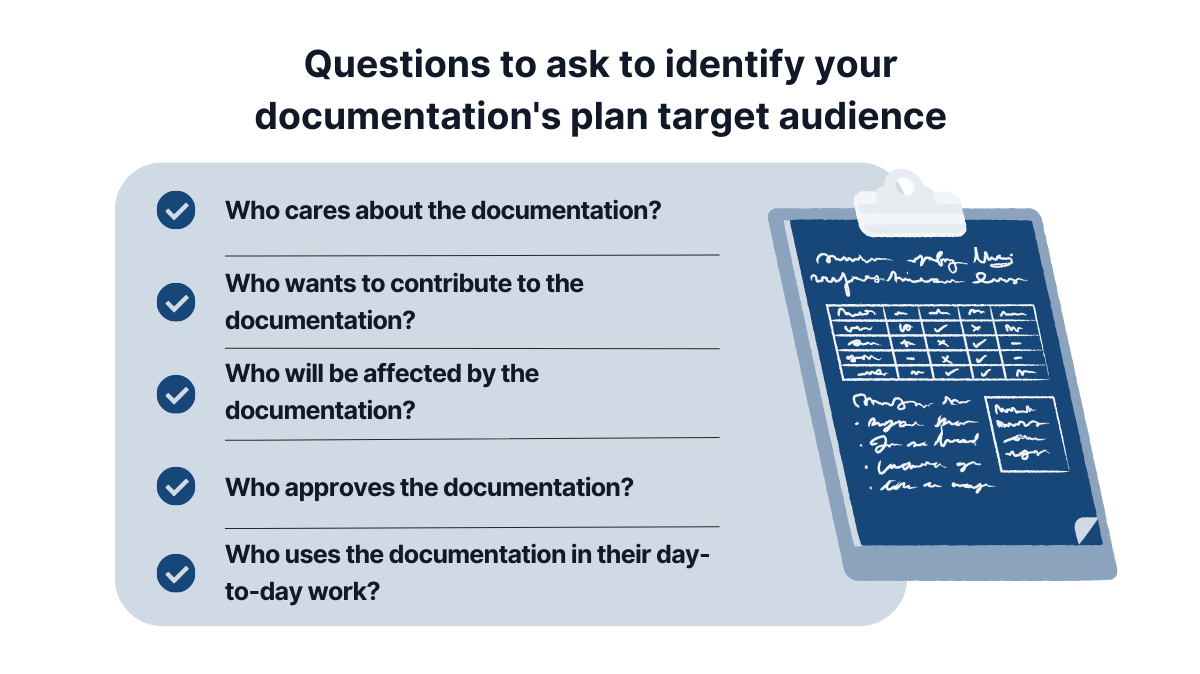
The first step in crafting effective product documentation is thoroughly understanding your audience.
Ask yourself these questions:
- Who are they?
- What are their technical competencies?
- What problems are they trying to solve with your product?
Answering these questions will help you tailor the documentation to meet your users’ needs and expectations.
Understanding the purpose of the documentation for the audience—whether it’s to help with onboarding, provide troubleshooting information, or guide through complex setups—shapes the content’s depth and complexity.
Choose the Right Documentation Formats
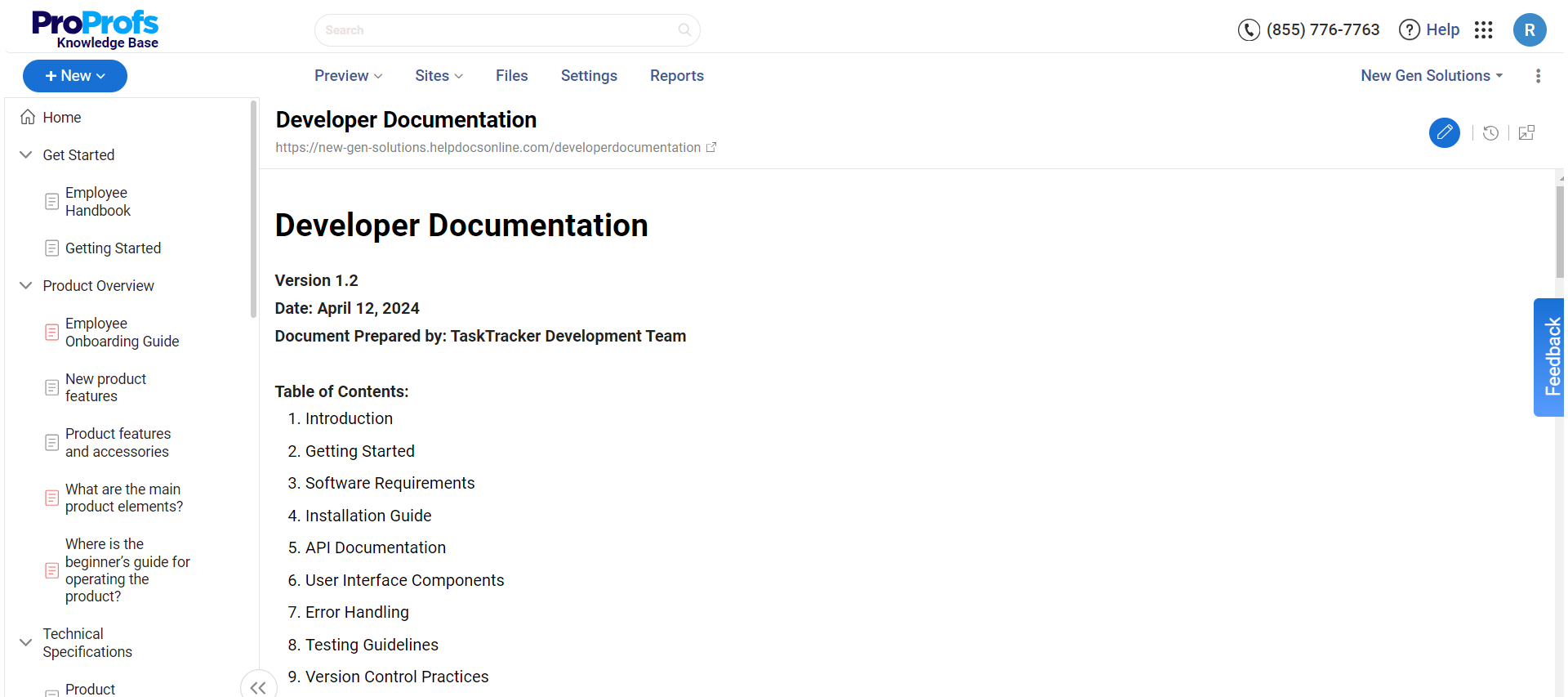
There are multiple types of product documentation, like tutorials, how-to guides, FAQs, technical specifications, and user manuals. Depending on the nature of your product and the needs of your audience, decide which types are most relevant.
Ask yourself the following questions:
- Do they need an FAQ?
- Do they need a user manual?
- Do they need multiple self-help articles on features, benefits, and functionality that they can refer to regularly?
For example, highly technical products require detailed technical specifications and developer guides, while consumer products benefit more from visual how-to guides and FAQs.
Create a Consistent Documentation Template
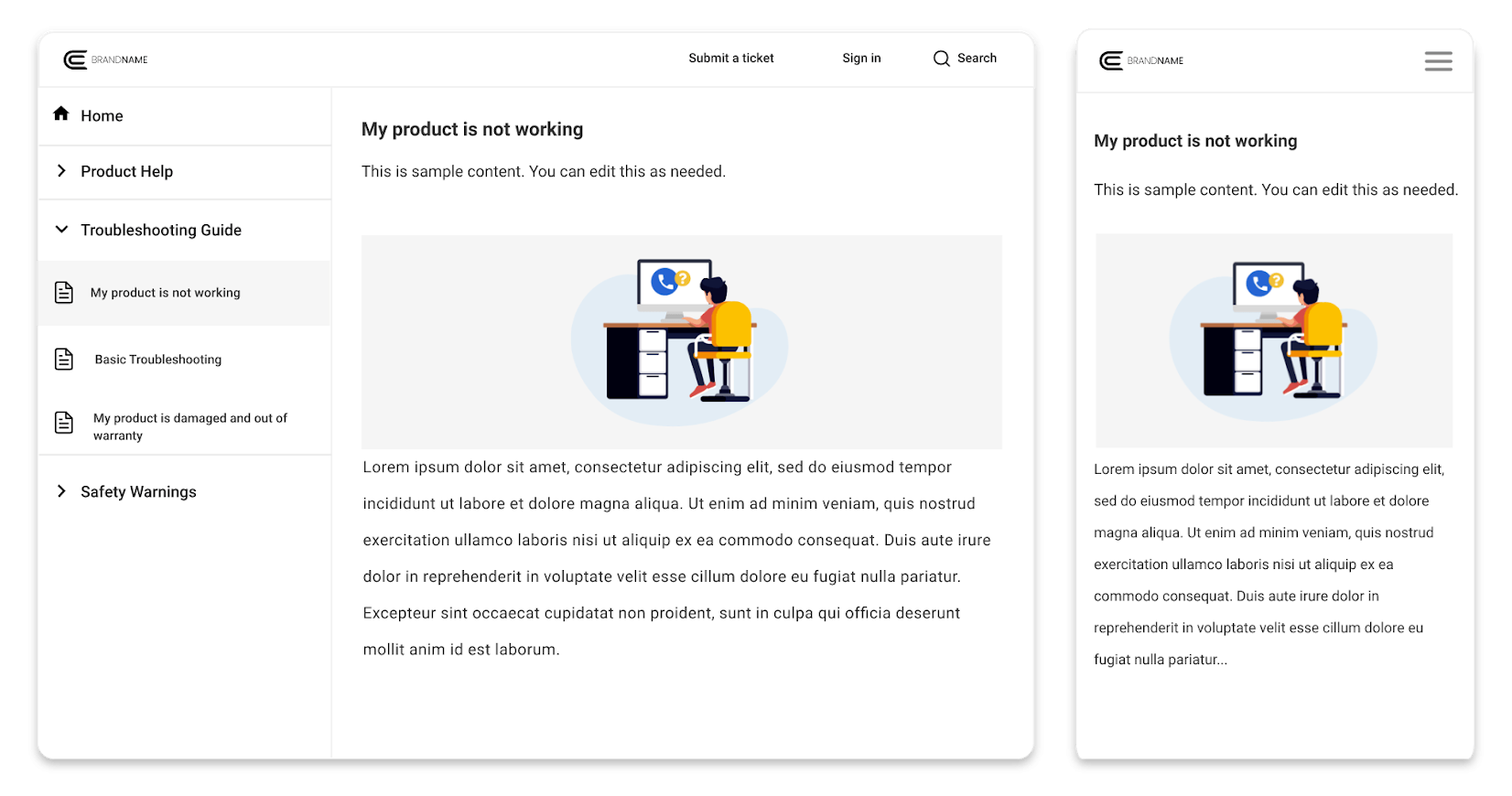
Designing a template for your documentation ensures consistency in style, tone, and format across all documents. An intuitive template should include a standard structure for your articles, like an introduction, a body section with clear headings, and a conclusion.
It should also have elements like a table of contents, index, glossary, and standard appendices if necessary. This consistency enhances the professionalism of your documentation and improves the user’s navigation and reading experience.
Enhance Content With Visuals
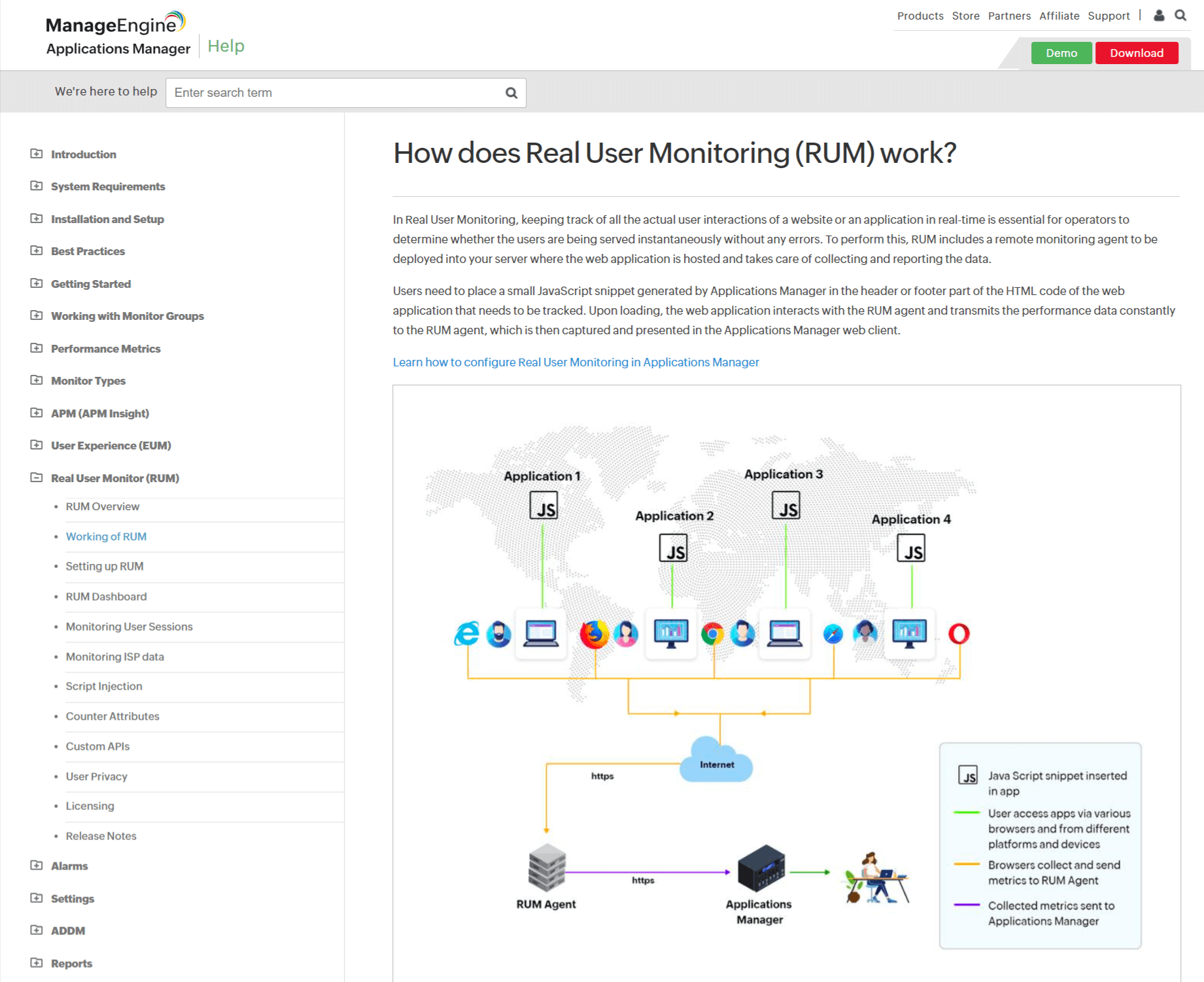
Improve the appeal and clarity of your documentation by incorporating multimedia elements. Images, videos, and GIFs can break up text-heavy content, illustrate complex steps more clearly, and provide visual examples of the product in action.
These elements are particularly effective in tutorials and how-to guides, where visual aids can significantly improve understanding and retention of information.
Simplify Navigation & Access
Organize your documentation with a simple, intuitive navigation structure that lets users quickly find the necessary information. Use clear, descriptive titles and headings, and organize content logically into categories and subcategories.
A robust search functionality and a user-friendly interface can significantly enhance the accessibility of your documentation.
Distinguish Code Documentation & Product Documentation
It’s crucial to separate end-user documentation from code documentation for software products.
End-user documentation should focus on using the product, troubleshooting issues, and FAQs, while code documentation (often aimed at developers) should detail the API, code libraries, and development environment. This separation ensures audiences can find relevant information without sifting through irrelevant details.
Provide a Comprehensive FAQ Section
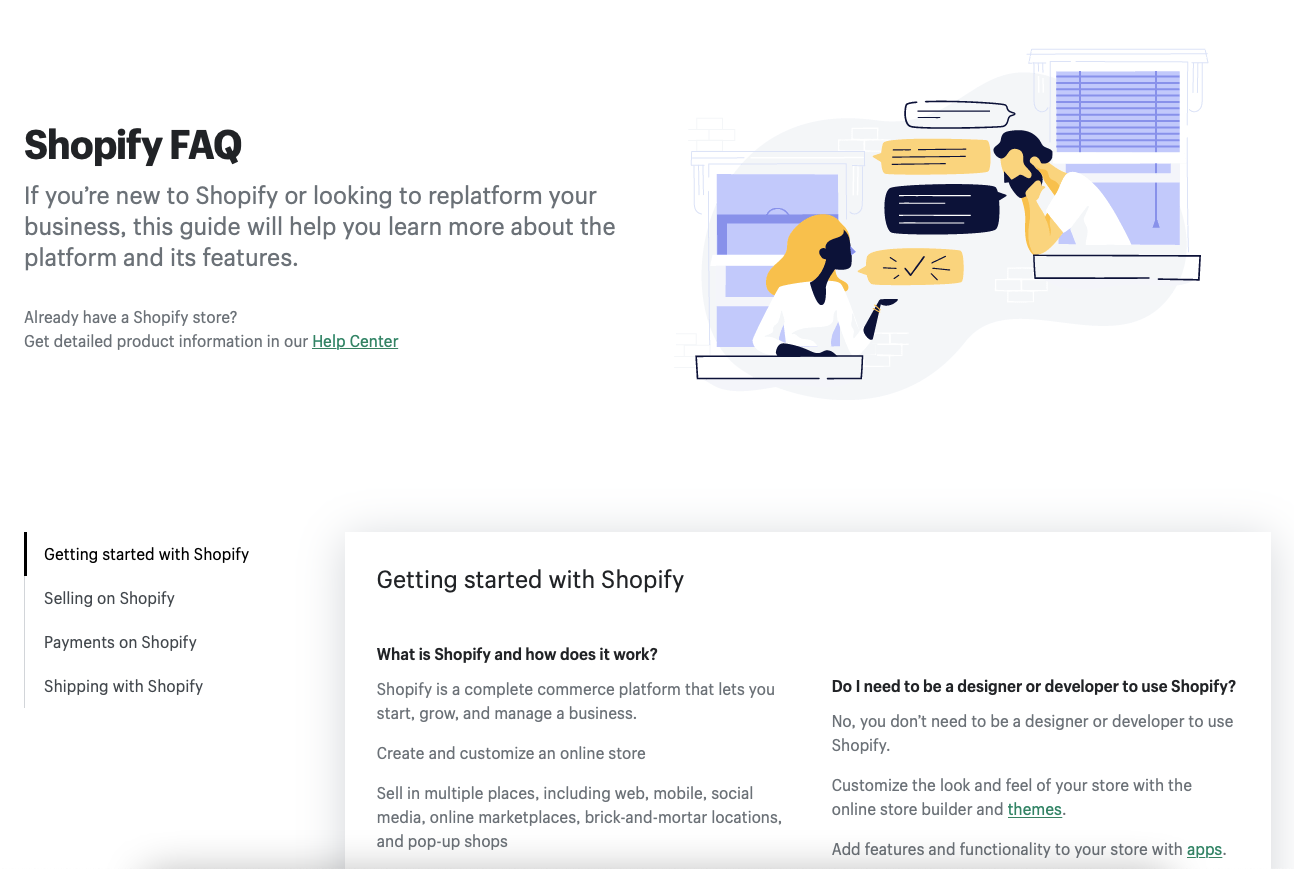
Answer all the possible FAQs with detailed information by dedicating a section of your documentation to answering frequently asked questions. This section addresses common challenges, or queries users may have, potentially reducing the volume of direct support requests.
Update the FAQ section regularly based on feedback and new issues that arise as the product evolves.
Update Documentation Regularly
Product documentation should not be static; it must evolve with the product. Plan for regular updates to your documentation to reflect new features, bug fixes, and improvements.
Make sure these updates are timely and communicated clearly to your users. Establishing a routine for reviewing and updating content ensures the documentation remains accurate, relevant, and valuable.
What Are the Best Practices for Creating Product Documentation?
Creating effective product documentation is essential for better user engagement and satisfaction. Here are some best practices to follow:
- Write in simple, jargon-free language to make the documentation accessible to users of all skill and knowledge levels
- Maintain a professional and approachable tone that focuses on providing valuable and reliable information
- Organize documentation with a user-friendly structure and search functionality for quick information retrieval
- Regularly gather and incorporate user feedback to continuously improve the quality and relevance of the documentation.
- Stay updated with user needs and product changes to keep the documentation updated and comprehensive
- Enhance textual content with diagrams, screenshots, and videos to aid understanding and retention
- Implement a routine for regularly reviewing and updating documentation to ensure its accuracy and usefulness
Examples of Product Documentation Done Right!
To ace your product documentation implementation, check out these examples of companies using product documentation tools to create comprehensive documentation.
Manage Engine
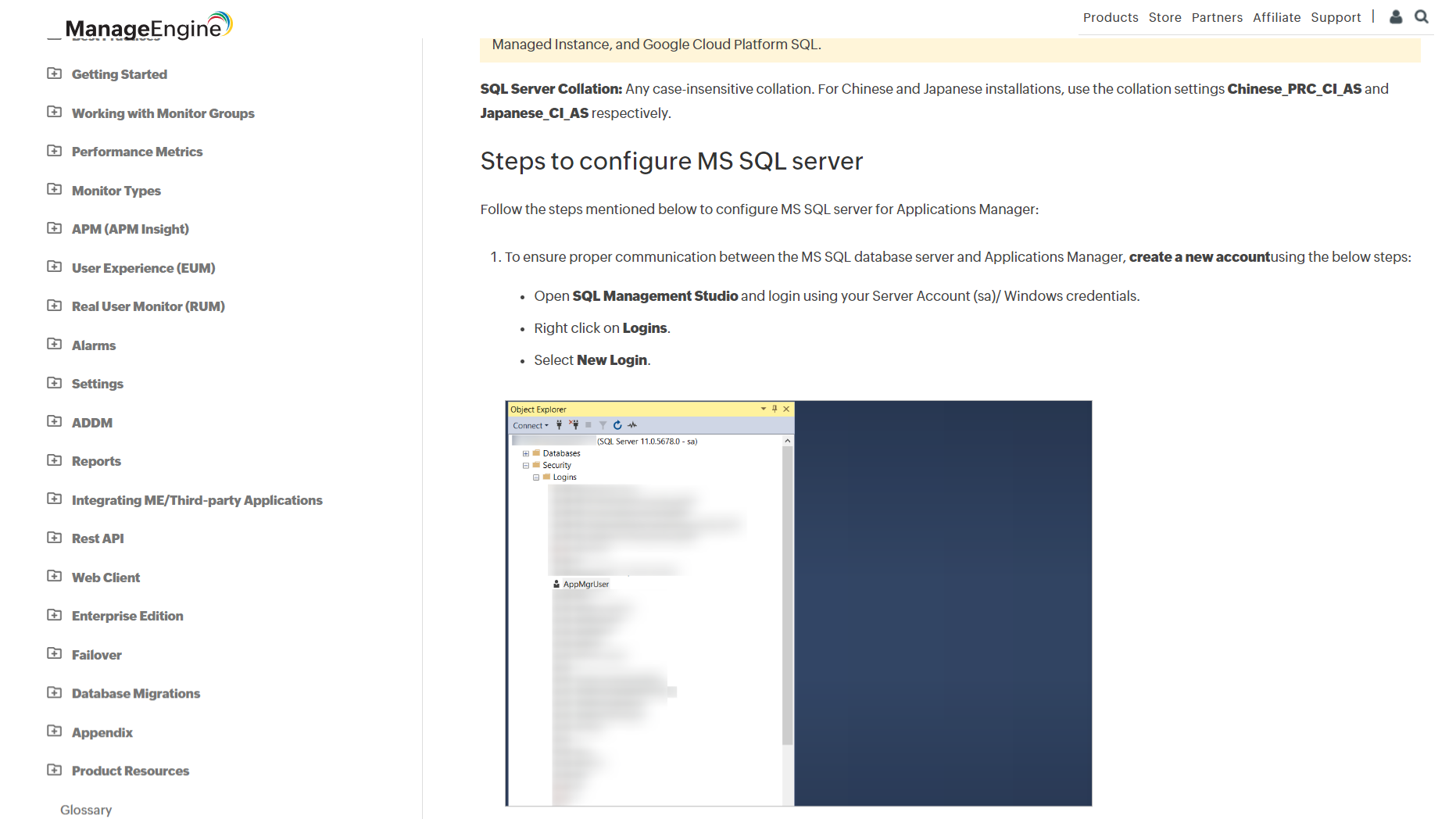
ManageEngine utilizes a clear and professional writing style suited to its technical audience. It features a structured format that begins with an introduction, followed by detailed step-by-step instructions and corresponding screenshots.
The documentation enables clarity and assists users in following the configuration process without confusion. The page includes necessary SQL commands and settings adjustments, presented in a logical sequence, which helps streamline the setup process.
RMS
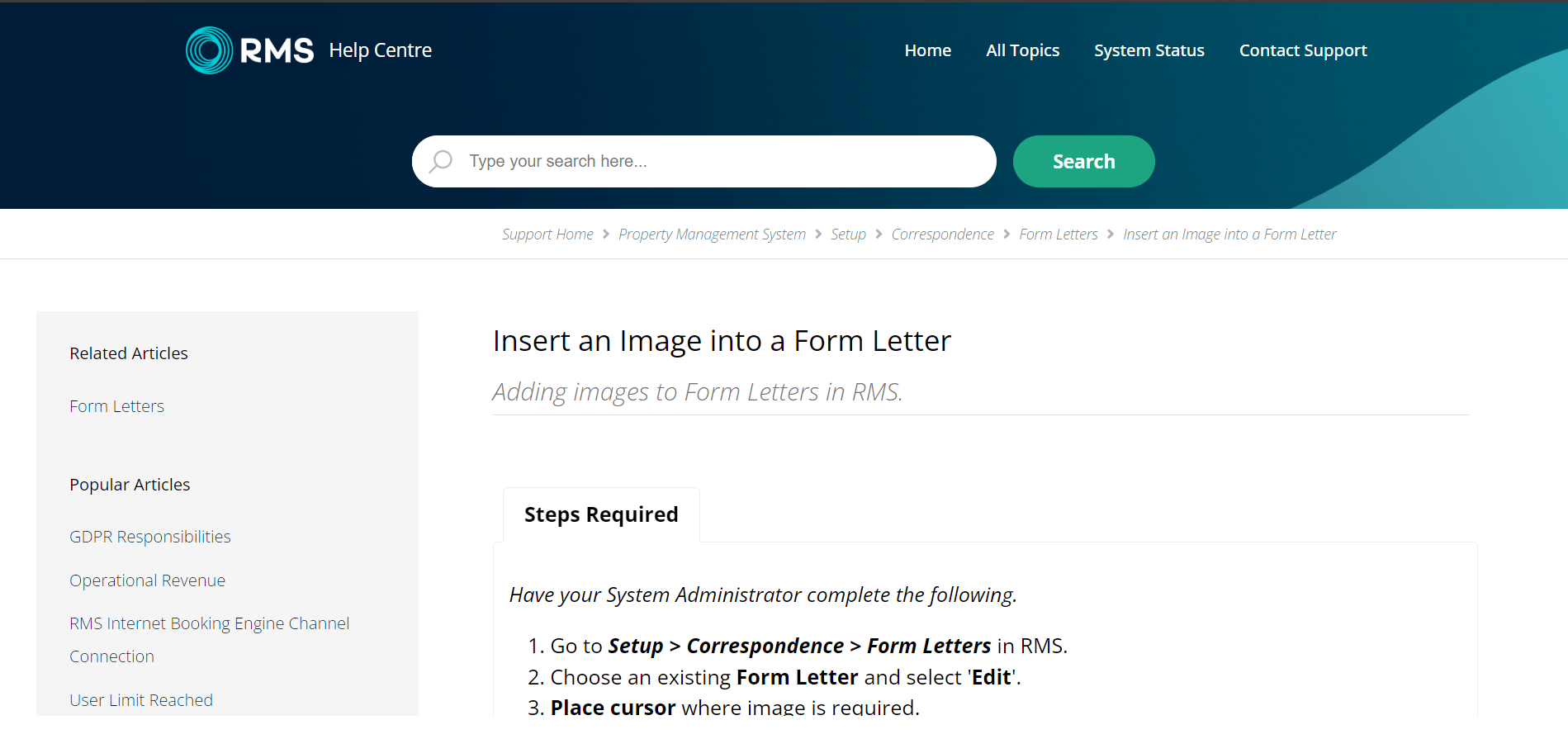
RMS features a concise and straightforward writing style, targeting users likely familiar with basic document editing tasks. The page layout is clean and focused, with a brief text that provides direct instructions and annotated screenshots that visually guide the user through each process step.
Each section of the guide is clearly defined with bold headings, making it easy for users to follow the workflow. Including visual aids helps reinforce the textual instructions, ensuring users can effectively execute the task without ambiguity.
Riscure
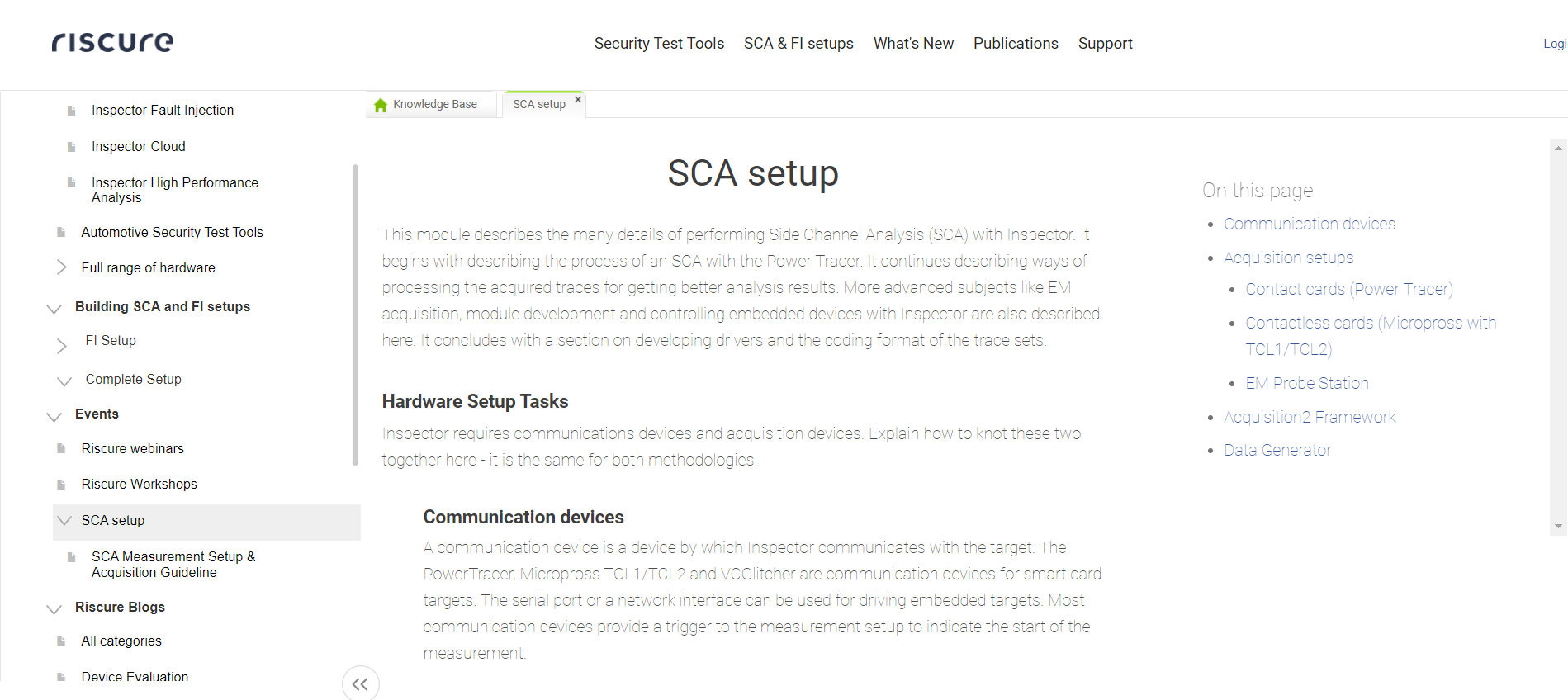
Riscure employs a highly technical and detailed writing style that caters to a specialized audience. The help content is organized methodically with clear, numbered steps to guide users through the setup process, enhancing readability and ease of understanding.
Each step is briefly described and supported by relevant images and diagrams that visually clarify complex concepts or connections essential for accurately setting up the necessary equipment and software.
Create Detailed Product Documentation for Enhanced Product Usage
Product documentation is indispensable for any organization looking to enhance user satisfaction, reduce support costs, and streamline product usage experience. By implementing a strategic approach to creating comprehensive, clear, and accessible documentation, businesses can ensure that their products are used effectively and to their full potential.
ProProfs Knowledge Base simplifies the creation and management of product documentation. Its user-friendly interface and versatile features enable businesses to develop a centralized hub of articles, guides, and help topics that users can easily access anytime, anywhere. The platform supports various content types, from text and images to videos and PDFs, making it flexible to the needs of different users.
It offers powerful search functionality that helps users find the information they need quickly and effortlessly. This tool also enables real-time collaboration, allowing teams to update and refine content continuously, ensuring that the documentation remains accurate and up-to-date with the latest product changes.
FREE. All Features. FOREVER!
Try our Forever FREE account with all premium features!
 We'd love your feedback!
We'd love your feedback! Thanks for your feedback!
Thanks for your feedback!







